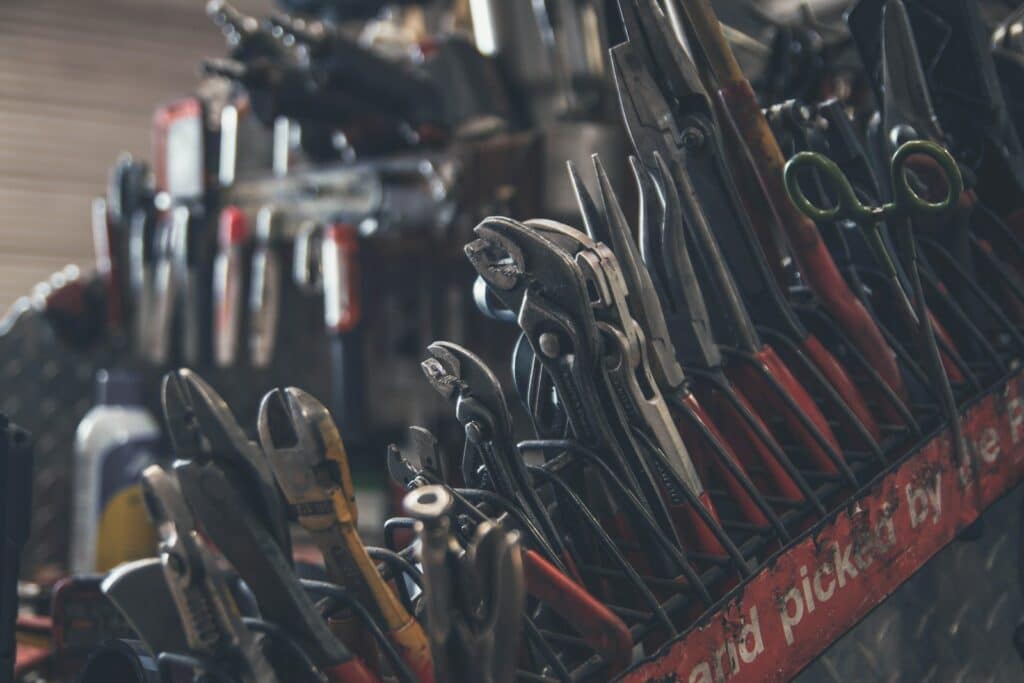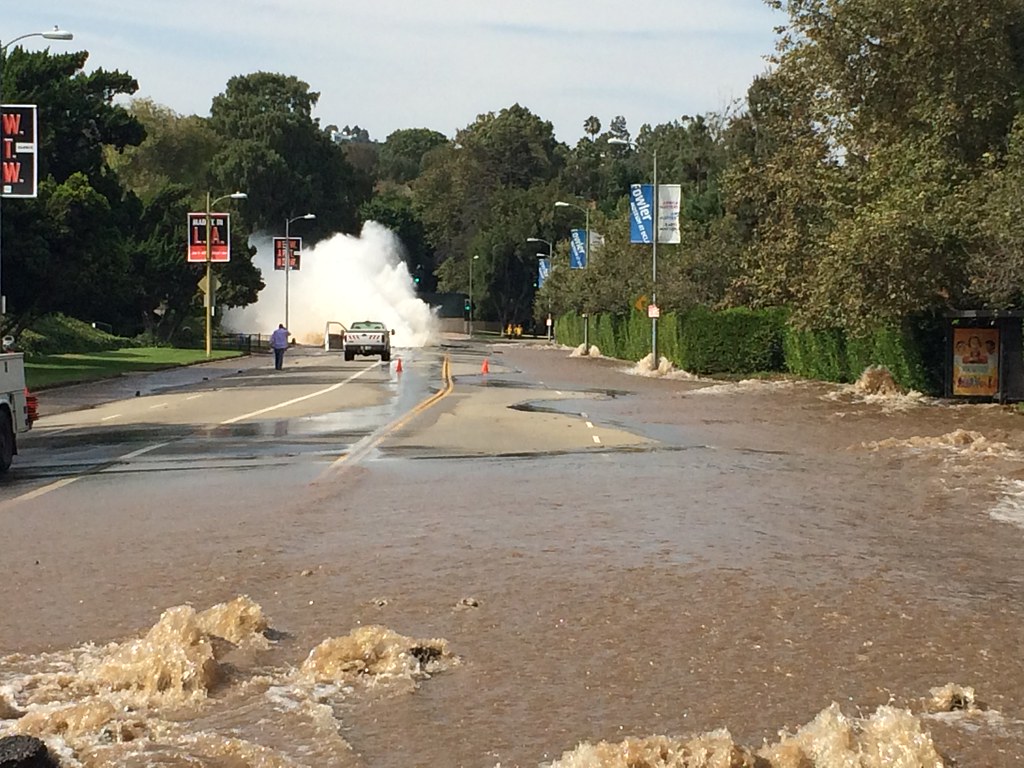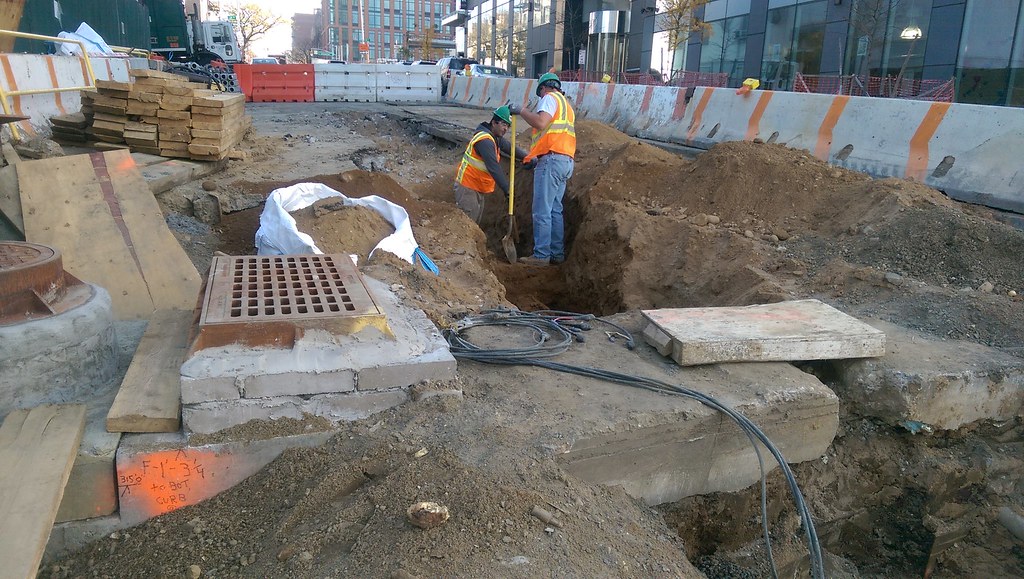Water is one of the most essential utilities in our homes. Yet, many homeowners don’t give much thought to their water main until there’s a problem. A water main break or a leak in the water line can spell major trouble for your property, causing significant damage, high water bills, and weeks of inconvenience.
Understanding how water main systems work and how to address issues like water main repair, a water line leak, or decreased water pressure can save you time, money, and stress. This guide breaks down the common signs of water main problems, what causes them, and how to resolve or prevent them.

Photo by Kenny Eliason on Unsplash
What Is a Water Main and Why Does It Matter?
The water main is the principal pipe that delivers clean water from the water utility company to your home. Water utility companies own and manage the pipes on public property, while homeowners are responsible for the water service line that runs from the property line to their house. Essentially, once the water passes through your water meter, it becomes your responsibility.
A properly functioning water main ensures consistent water flow and pressure to your house. However, issues like water line leaks, damaged pipes, and water main breaks can disrupt this flow and lead to various expensive problems.
Common Causes of a Water Main Break
Water main breaks can be a costly and disruptive problem, but understanding their common causes can help homeowners take preventive measures. Below are some of the most frequent reasons water mains fail:
Aging Infrastructure
One of the primary causes of water main breaks is old or deteriorating pipes. Over time, pipe materials like cast iron and galvanized steel corrode, weaken, and become more prone to fractures, especially in older neighborhoods with outdated plumbing systems.
Temperature Fluctuations
Extreme changes in temperature, particularly during the winter, can cause pipes to expand and contract. This stress weakens the pipes over time, increasing the likelihood of a break. Freezing temperatures are especially harmful, as the ground shifts and exerts pressure on buried pipes.
Shifting Soil and Ground Movement
Soil erosion, heavy rain, or nearby construction can disturb the ground around water mains, leading to misalignment or excessive pressure on the pipes. Earthquakes and even minor vibrations in the ground can also cause cracks and failures.
High Water Pressure
Excessive water pressure can place undue strain on the pipes, causing them to burst. Poorly calibrated or malfunctioning pressure-regulating valves often contribute to this problem, particularly in aging systems.
Tree Root Intrusion
Tree roots naturally seek out water sources and can infiltrate pipes through small cracks or joints. Once inside, roots grow and expand, leading to blockages or weakened pipe walls that may eventually rupture.
Corrosion
Corrosion is a major factor in the degradation of metal pipes. Over time, exposure to minerals in the soil and the water itself can corrode pipes from the inside out, reducing their structural integrity.
Improper Installation or Repairs
Faulty installation or subpar repair work can leave water mains prone to failure. Misaligned joints, weak seals, or the use of improper materials can exacerbate wear and lead to premature breaks.
By recognizing these common causes, homeowners can take proactive steps, such as scheduling regular inspections, replacing aging pipes, and addressing potential risks like excessive tree growth or soil erosion, to minimize the potential for water main failures.
Common Signs of a Water Main Problem
Early detection is key to minimizing costly repairs. Here are some common signs that your water main might need repair:
- Decreased Water Pressure: A sudden drop in water pressure can indicate a crack or break in your water line.
- Dirty Water: If your tap water is discolored, it might be picking up dirt and debris as it passes through a damaged pipe.
- Water Pooling in the Yard: Unexplained water pooling on your lawn or around the property line often signals a leak near underground pipes.
- Unusually High Water Bill: Wasted water from even a minor leak can dramatically increase your water bill.
- Noise from Pipes: Gurgling, hissing, or whistling could mean there’s air trapped in your plumbing system due to a leak.
If you notice any of these issues, an immediate inspection is critical. Postponing a repair could lead to significant damage.
Steps to Take If You Suspect a Water Main Leak
Dealing with a suspected leak or water main break can feel intimidating, but following these steps can help you manage the situation effectively:
Inspect for Leaks
Look around your property for obvious signs like water pooling, soil erosion, or wet areas on the ground.
Check Your Water Meter
Turn off all water usage in your home, then check your water meter. If the meter is still running, you likely have a leak.
Contact Your Water Company
If the issue lies on the water utility company’s side of the water main, they will handle the repair. However, if the problem is within your property line, the cost and responsibility fall on you.
Hire a Licensed Plumber
Call an experienced, professional plumber to locate the leak with specialized equipment and provide a full assessment of the situation.
What Does Your Homeowners Insurance Cover?
Consult your homeowners insurance provider to determine if your policy covers water line repair. Not all policies will cover issues like pipe bursting or main water line leaks, so it’s always best to double-check.

Photo by Mark Valentine on Unsplash
Why Maintaining Your Water Main Is Crucial
Proper water main maintenance is essential for several reasons, each of which impacts both the health of your plumbing system and the overall well-being of your household. Here are the key reasons why keeping your water main in top condition should be a priority:
Prevents Major Damage
Neglecting a water main can lead to cracks, leaks, or even complete bursts. These issues often cause extensive water damage to your property, resulting in high repair costs and potential structural problems. Regular maintenance helps detect small issues before they escalate.
Ensures Consistent Water Supply
A damaged or poorly maintained water main can disrupt the flow of water to your home. This could mean reduced water pressure, contamination risks, or no water at all in some cases. A well-maintained system ensures uninterrupted access to clean water.
Improves Water Quality
Corrosion or leaks in your water main can allow contaminants to enter your water supply. This poses a health hazard to you and your family. By maintaining your water main, you help protect the quality and safety of your water.
Saves Money on Repairs
Preventative maintenance is typically far less expensive than repairing significant damage caused by neglect. By addressing potential issues early, you avoid costly emergency repairs and long-term damage.
Preserves Property Value
A well-maintained plumbing system is a crucial component of your home’s overall value. Potential buyers are more likely to invest in properties with reliable infrastructure, so taking care of your water main can be beneficial if you plan to sell your home.
Conserves Water
Leaks in a water main can lead to significant water waste over time, which not only increases your utility bills but also impacts environmental resources. Regular checks and prompt repairs ensure your system operates efficiently and sustainably.
Complies with Local Codes
Many municipalities require homeowners to maintain their water mains to meet local plumbing codes and regulations. Poor maintenance can lead to fines or legal issues, so staying on top of inspections is in your best interest.
By prioritizing water main maintenance, you protect your home, improve water quality, and potentially save thousands in repair costs, all while ensuring a safe and sustainable water supply for your household.

Photo by Deborah L Carlson on Unsplash
Techniques for Main Water Line Repair
There are several methods plumbers use to address issues with your main water line. The approach will depend on the type and severity of the problem.
Pipe Lining
Pipe lining involves inserting a resin-coated “pipe within a pipe” to seal off leaks. This minimally invasive process avoids excavation and is a cost-effective option for minor leaks.
Pipe Bursting
When the pipe is beyond repair, pipe bursting is often the solution. This involves breaking the damaged pipe and replacing it with a new one. This method is efficient and minimizes disruption to your yard.
Traditional Excavation and Repair
For major water main breaks, traditional digging may be necessary to access and repair or replace the damaged pipe. This method, though labor-intensive, ensures the integrity of your water line is restored.
Preventative Measures for Homeowners
Prevention is always better than repair. Consider these measures to minimize the risk of water main problems:
- Upgrade Old Water Pipes: If your home still uses galvanized steel or other outdated materials, replacing them with PVC pipes or copper will improve durability and performance.
- Monitor Your Water Pressure: Excessively high water pressure strains your plumbing systems and may cause leaks. Install a pressure regulator if needed.
- Schedule Regular Inspections: Periodic inspections by licensed plumbers can identify minor leaks and potential weak spots before they escalate.
- Be Cautious During Landscaping: Avoid planting large trees near your water service line to prevent root intrusion into pipes.
- Insulate Pipes in Winter: Protect exposed pipes from freezing temperatures by wrapping them in insulation.
The Cost of Water Main Repair
It’s natural to wonder about the financial impact of water main issues. Costs for main water line repairs can vary widely. Factors like the location of the damage, the materials used, and the method of repair all influence the final repair bill.
Generally, homeowners should expect to pay anywhere from $500 for minor repairs to $4,000 or more for major replacements like pipe bursting or installing a new pipe. Acting quickly and working with a qualified plumber can often help reduce costs.
When to Call a Professional Licensed Plumber Like GAEPlumbing&Heating
While some plumbing problems are DIY-friendly, water main repairs require specialized knowledge, tools, and expertise. Hiring a licensed plumber like those at GAEPlumbing and Heating ensures the job is done safely, effectively, and in compliance with local regulations. Professionals can use advanced equipment to detect leaks, assess water flow, and deliver a comprehensive solution tailored to the specific issue.
Helpful Links, Resources, and Websites on Water Main Breaks and Services
- American Water Works Association (AWWA): Visit www.awwa.org for industry insights, resources, and water main management guidelines.
- Environmental Protection Agency (EPA) – Water Infrastructure: Access information on water infrastructure and maintenance at www.epa.gov.
- National Rural Water Association (NRWA): Explore community water system resources at www.nrwa.org to learn about local water management and repairs.
- Plumbing-Heating-Cooling Contractors Association (PHCC): Check www.phccweb.org for licensed contractors and advice on repairing or replacing water mains.
- Angi (formerly Angie’s List): Find trusted service descriptions and repair professionals near you at www.angi.com.
- Water Research Foundation: Discover funding opportunities and research on water system advancements at www.waterrf.org.
Protect Your Home and Water Supply
A functioning water main is vital for your home’s plumbing system and overall comfort. By recognizing the signs of trouble, acting promptly, and investing in preventative maintenance, you can protect your property from costly damage and ensure a consistent water supply.
For peace of mind and expert assistance, schedule a professional inspection today. Your home and wallet will thank you!


